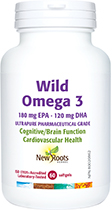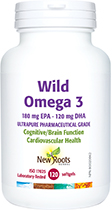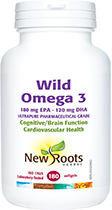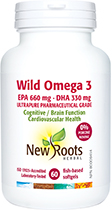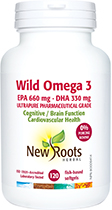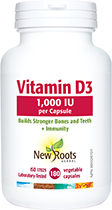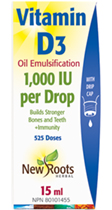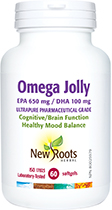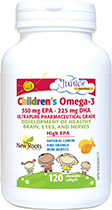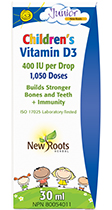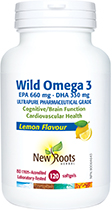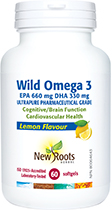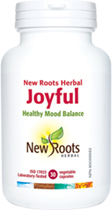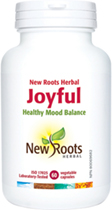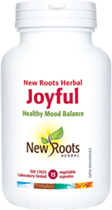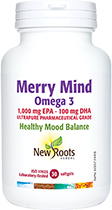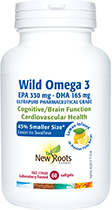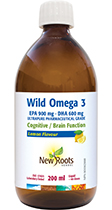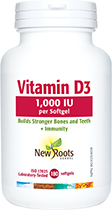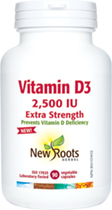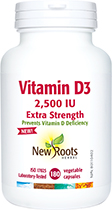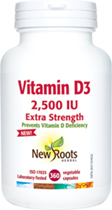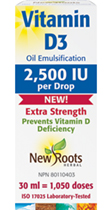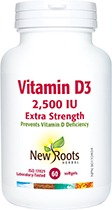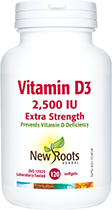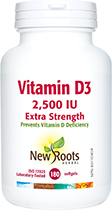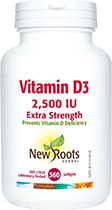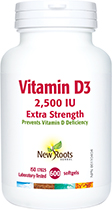Seasonal Affective Disorder: “Beating the Winter Blues”
Late fall and winter can be a mentally challenging time of year for many Canadians: The weather gets colder, the days get shorter, and people spend less time outside. It is estimated that up to 15% of the population experiences “winter blues”—brief periods of feeling down, with low energy, a reduced desire to engage in social activities, and possibly an increased need for sleep.[1] For most, these blues are transitory, but for others—about 3% of Canadians—they experience a winter-long condition called seasonal affective disorder (SAD).[2]
Seasonal affective disorder is a type of depression that occurs in a seasonal pattern, usually beginning in the fall or winter, worsening as the days get shorter, and then improving or completely resolving as spring approaches and the days get longer.[3], [4] Seasonal affective disorder more commonly affects people who live in areas with long or severe winters, with incidence rates rising with higher latitude—increasing distance north or south from the equator.[5], [6], [7]
The exact etiology of SAD is unknown, but it is thought to be associated with season-related changes in light exposure.[8] Thus, the number-one treatment for SAD is “bright-light” or “photo” therapy.[9], [10] This is typically completed at home using a special light that emits short- to medium-wavelength light at 2,500 to 10,000 lux, placed 30 to 60 cm away from the face for 30 to 60 minutes every day.[11], [12]
As SAD is associated with diminished sunlight exposure and often improves with phototherapy (about 66% of cases), it has been theorized that SAD may in part be associated with lowered vitamin D levels.[13], [14], [15], [16] Vitamin D, also known as the “sunshine vitamin,” is created in the skin when it is exposed to ultraviolet light from the sun.[17] A few studies have looked at the effect of supplementing both high- and low-dose vitamin D in folks affected by SAD, with relatively positive results: An improved vitamin D status was significantly associated with symptom improvements.[18], [19], [20]
More broadly, the role of vitamin D in nonseasonal depression has been well-studied, with research suggesting low levels are associated with more severe depressive symptoms, and that vitamin D supplementation—when levels are low—improves mental-health symptoms overall.[21], [22] Given that Statistics Canada estimates up to 40% of Canadians have lower-than-ideal vitamin D levels in the wintertime, and that low vitamin D is associated with lowered mental health in general, supplementation of vitamin D may be beneficial for wintertime mood support.[23], [24]
 Another nutrient class thought to influence the occurrence of SAD are omega-3 fatty acids, specifically eicosapentaenoic acid (EPA) and docosapentaenoic acid (DHA). These are two types of omega-3 fatty acids that our body needs to function optimally but cannot make on its own. Thus, EPA and DHA must be obtained from external sources, i.e., from food or supplements.[25]
Another nutrient class thought to influence the occurrence of SAD are omega-3 fatty acids, specifically eicosapentaenoic acid (EPA) and docosapentaenoic acid (DHA). These are two types of omega-3 fatty acids that our body needs to function optimally but cannot make on its own. Thus, EPA and DHA must be obtained from external sources, i.e., from food or supplements.[25]
As food groups go, fish and seafood tend to have the highest amount of EPA and DHA per serving size.[26] However, not all types of fish and seafood are equally high in EPA and DHA; some contain a little while others contain a lot. The options highest in EPA and DHA (averaging at least 1 g of EPA and DHA per 75 g serving) are salted mackerel (3.43 g), caviar (1.96 g), herring (1.6 g), canned anchovies (1.54 g), raw or cooked Atlantic or Chinook salmon (1.31–1.77 g), and cooked Pacific oysters (1.04 g).[27] Other fish/seafood containing between 0.4 and 1 g of EPA/DHA per 75 g serving include raw or cooked Sockeye (0.87–0.93 g) and Coho salmon (0.8–1.08 g); cooked Pacific cod (0.79 g); cooked Arctic char (0.68 g); canned white tuna (0.65 g); cooked mussels (0.59 g); cooked carp (0.56 g); raw, cooked, or canned Pink salmon (0.46–1.27 g); and cooked pollock (0.40 g).[28]
Population studies suggest countries with high per-capita fish intake have significantly lower rates of SAD compared to other countries at similar latitudes with lower per-capita fish intake.[29], [30], [31] Dieticians of Canada recommend Canadians consume two servings of fish per week, averaging between 300 and 450 mg of combined EPA and DHA per day, or 2,100 to 3,150 mg per week.[32], [33]
However, many studies suggest that EPA may be more beneficial than DHA in supporting mental health and reducing depressive symptoms, with an average EPA intake of 1,000 to 2,000 mg per day showing the most benefit.[34], [35] As you can tell from the above list of fish/seafood by omega-3 content, this would require consuming a lot of fish every day! Fortunately, high-EPA fish-oil supplements make it easy and cost-effective to achieve the suggested daily dose.
In other words: Increased omega-3 fatty acid consumption, especially EPA from fish and/or high-EPA fish oil, has been associated with reduced rates of seasonal mood disorders. Furthermore, numerous studies suggest that a high omega-3 fatty acid intake from food and supplements is beneficial to improve mental health and is associated with lower levels of depression overall.[36], [37]
So, if the winter blues get you down this year, take it easy, be kind to yourself, and know that it should not last long. Try eating some fish, discuss high-EPA and vitamin D supplementation with your doctor or pharmacist, and seek as much sunlight as you can. Some other ideas that may help support mood and reduce the “winter blues” include acupuncture, massage therapy, yoga, essential oils (aromatherapy), counselling, and music therapy.[38] But if you find yourself struggling or feeling down for more than a few days, don’t hesitate to reach out for help and support—the Canadian Mental Health Association (cmha.ca), Wellness Together (wellnesstogether.ca), or your family physician are all good places to start. No matter how you’re feeling, you are not alone.
 Dr. Katie DeGroot, BSc, ND, MScN
Dr. Katie DeGroot, BSc, ND, MScN
Dr. DeGroot is an Alberta-registered naturopathic doctor who also holds a Master of Science in Nutrition. She offers nutritionally focused care and has a special interest in digestive issues and supportive mental health-care.
drkatiedegroot.ca
[1] [Anonymous.] Winter blues 101. Canadian Mental Health Association. · https://cmha.ca/winter-blues-101/ · Posted 2020-01-13. Accessed 2021-10-30.
[2] Levitt, A.J., M.H. Boyle, R.T. Joffe, and Z. Baumal. “Estimated prevalence of the seasonal subtype of major depression in a Canadian community sample.” Canadian Journal of Psychiatry / Revue canadienne de psychiatrie, Vol. 45, No. 7 (2000): 650–654.
[3] Coryell, W. “Depressive disorders.” Merck Manual—Professional Edition. · https://www.merckmanuals.com/en-ca/professional/psychiatric-disorders/mood-disorders/depressive-disorders · Updated 2021-08. Accessed 2021-10-22.
[4] Gaby, A.R. “Seasonal affective disorder.” Chapter 293 in: Gaby, A.R. Nutritional Medicine, Second Edition, 2017.
[5] Coryell. “Depressive disorders.”
[6] Mayo Clinic staff. “Seasonal affective disorder (SAD).” Mayo Clinic. · https://www.mayoclinic.org/diseases-conditions/seasonal-affective-disorder/symptoms-causes/syc-20364651 · Updated 2021-12-14.
[7] Rosen, L.N., S.D. Targum, M. Terman, M.J. Bryant, H. Hoffman, S.F. Kasper, J.R. Hamovit, J.P. Docherty, B. Welch, and N.E. Rosenthal. “Prevalence of seasonal affective disorder at four latitudes.” Psychiatry Research, Vol. 31, No. 2 (1990): 131–144.
[8] Gaby. “Seasonal affective disorder.”
[9] Gaby. “Seasonal affective disorder.”
[10] “Light therapy.” Natural Medicines. · https://naturalmedicines.therapeuticresearch.com/databases/health-wellness/professional.aspx?productid=1433 (paywalled) · Accessed 2021-10-22.
[11] Mayo Clinic staff. “Depressive disorders.” Mayo Clinic. · https://www.merckmanuals.com/en-ca/professional/psychiatric-disorders/mood-disorders/depressive-disorders · Updated 2021-08. Accessed 2021-10-22.
[12] Lee, T.M., C.C. Chan, J.G. Paterson, H.L. Janzen, and C.A. Blashko. “Spectral properties of phototherapy for seasonal affective disorder: A meta-analysis.” Acta Psychiatrica Scandinavica. Vol. 96, No. 2 (1997): 117–121.
[13] Gaby. “Seasonal affective disorder.”
[14] Gloth, F.M. 3rd, W. Alam, and B. Hollis. “Vitamin D vs broad spectrum phototherapy in the treatment of seasonal affective disorder.” The Journal of Nutrition, Health & Aging, Vol. 3, No. 1 (1999): 5–7.
[15] Stewart, A.E., K.A. Roecklein, S. Tanner, and M.G. Kimlin. “Possible contributions of skin pigmentation and vitamin D in a polyfactorial model of seasonal affective disorder.” Medical Hypotheses, Vol. 83, No. 5 (2014): 517–525.
[16] Melrose, S. “Seasonal affective disorder: An overview of assessment and treatment approaches.” Depression Research and Treatment, Vol. 2015 (2015): 178564.
[17] [Anonymous.] “Vitamin D.” The Nutrition Source, Harvard T.H. Chan School of Public Health. · https://www.hsph.harvard.edu/nutritionsource/vitamin-d/ · Updated 2020-03. Accessed 2021-10-30.
[18] Gaby. “Seasonal affective disorder.”
[19] Gloth, Alam, and Hollis. “Vitamin D vs broad spectrum phototherapy.”
[20] Young, S.N. “Has the time come for clinical trials on the antidepressant effect of vitamin D?” Journal of Psychiatry & Neuroscience, Vol. 34, No. 1 (2009): 3.
[21] Young. “Has the time come?”
[22] Premkumar, M., T. Sable, D. Dhanwal, and R. Dewan. “Vitamin D homeostasis, bone mineral metabolism, and seasonal affective disorder during 1 year of Antarctic residence.” Archives of Osteoporosis, Vol. 8 (2013): 129.
[23] Janz, T., and C. Pearson. “Vitamin D blood levels of Canadians.” Statistics Canada Catalogue no. 82-624-X. · https://www150.statcan.gc.ca/n1/pub/82-624-x/2013001/article/11727-eng.htm · Published 2013-01-10. · Accessed 2021-10-30.
[24] Government of Canada. Vitamin D and calcium: Updated dietary reference intakes. · https://www.canada.ca/en/health-canada/services/food-nutrition/healthy-eating/vitamins-minerals/vitamin-calcium-updated-dietary-reference-intakes-nutrition.html · Published 2020-07-28. · Accessed 2021-10-30.
[25] [Anonymous.] “Omega-3 fatty acids: An essential contribution.” The Nutrition Source, Harvard T.H. Chan School of Public Health. · https://www.hsph.harvard.edu/nutritionsource/what-should-you-eat/fats-and-cholesterol/types-of-fat/omega-3-fats/ · Accessed 2021-10-30.
[26] Dieticians of Canada. Food sources of omega-3 fats. · https://blogs.dal.ca/nutritioncorner/files/2020/02/Omega-3.pdf · Updated 2016-06-30.
[27] Dieticians of Canada. Food sources of omega-3 fats.
[28] Dieticians of Canada. Food sources of omega-3 fats.
[29] [Anonymous.] “Omega-3 fatty acids: an essential contribution.”
[30] Cott, J., and J.R. Hibbeln. “Lack of seasonal mood change in Icelanders.” The American Journal of Psychiatry, Vol. 158, No. 2 (2001): 328.
[31] Magnusson, A., J. Axelsson, M.M. Karlsson, and H. Oskarsson. “Lack of seasonal mood change in the Icelandic population: Results of a cross-sectional study.” The American Journal of Psychiatry, Vol. 157, No. 2 (2000): 234–238.
[32] Dieticians of Canada. Food sources of omega-3 fats.
[33] Government of Canada. Dietary reference intakes. · https://www.canada.ca/en/health-canada/services/food-nutrition/healthy-eating/dietary-reference-intakes/tables/reference-values-macronutrients-dietary-reference-intakes-tables-2005.html · Updated 2006-06-29. · Accessed 2021-10-30.
[34] “Eicosapentaenoic acid (EPA).” Natural Medicines. · https://naturalmedicines.therapeuticresearch.com/databases/food,-herbs-supplements/professional.aspx?productid=994 (paywalled) · Accessed 2021-10-30.
[35] “Docosahexaenoic acid (DHA).” Natural Medicines. · https://naturalmedicines.therapeuticresearch.com/databases/food,-herbs-supplements/professional.aspx?productid=864 (paywalled) · Accessed 2021-10-30.
[36] Grosso, G., F. Galvano, S. Marventano, M. Malaguarnera, C. Bucolo, F. Drago, and F. Caraci. “Omega-3 fatty acids and depression: Scientific evidence and biological mechanisms.” Oxidative Medicine and Cellular Longevity, Vol. 2014 (2014): 313570.
[37] Deacon, G., C. Kettle, D. Hayes, C. Dennis, and J. Tucci. “Omega 3 polyunsaturated fatty acids and the treatment of depression.” Critical Reviews in Food Science and Nutrition, Vol. 57, No. 1 (2017): 212–223.
[38] “Effectiveness checker: Depression.” Natural Medicines. · https://naturalmedicines.therapeuticresearch.com/tools/effectiveness-checker.aspx?q=depression&page=2 (paywalled) · Accessed 2021-10-30.

 Stores
Stores
